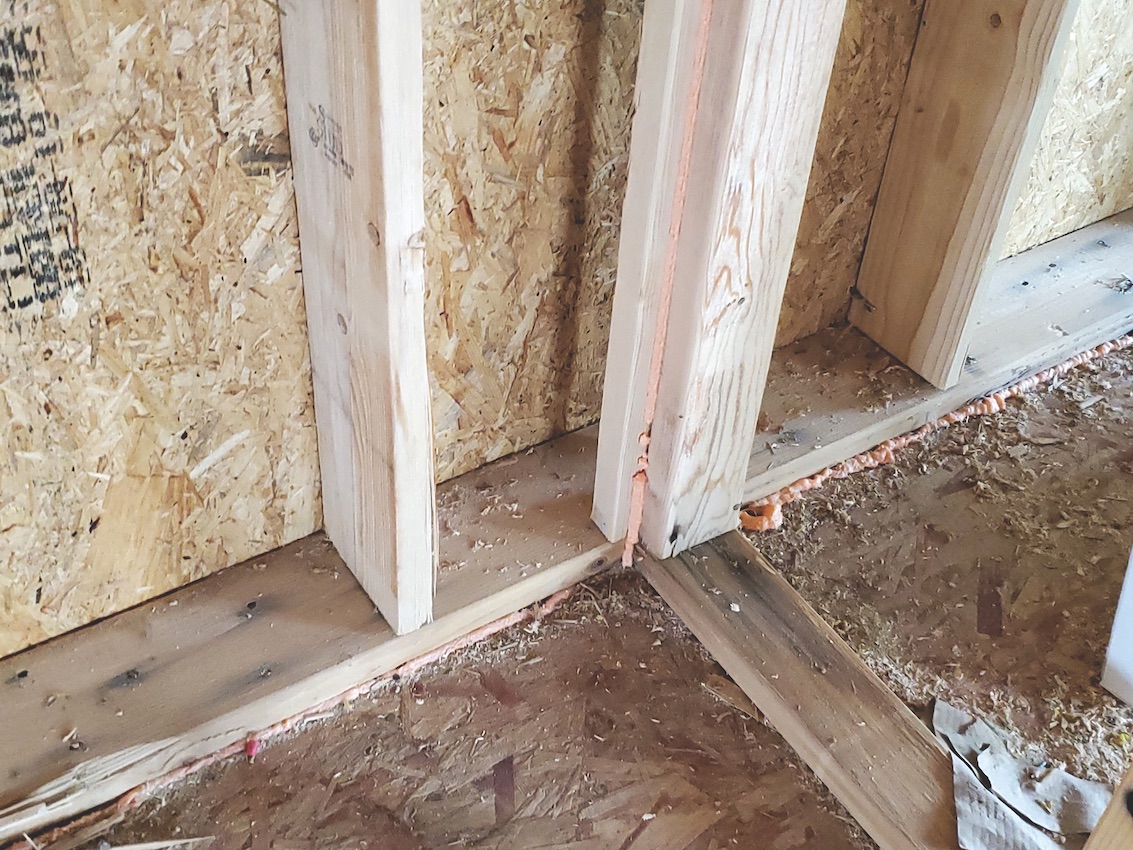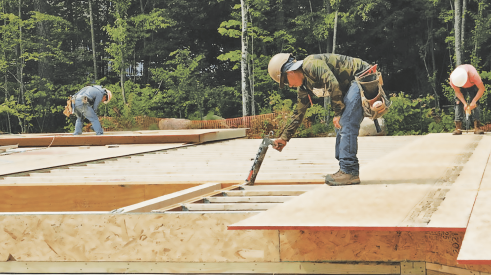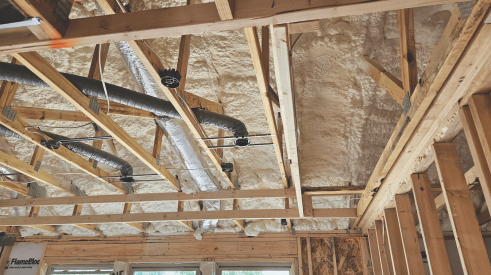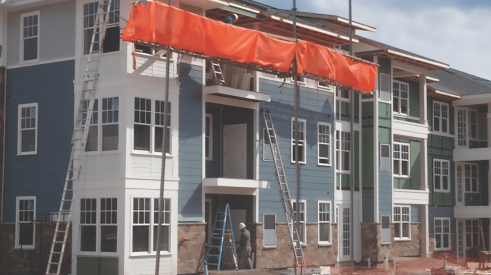The message is simple: Taking an optimized value-engineered approach to wall framing can not only significantly improve thermal performance but also reduce your costs and deliver a more comfortable home.
Because heat passes through wood framing more easily than it does through common insulation products, optimized value engineering (OVE) encourages builders to reduce the amount of wall framing as much as possible and, in turn, to increase the amount of wall-cavity insulation.
Consider this example: Kiln-dried lumber has a thermal value of about R-1 per inch. Add a ½-inch of OSB sheathing and you get to R-4. On the other hand, insulation usually varies from R-13 to as much as R-24, depending on the material, and insulation is cheaper than studs, posts, and headers (especially recently).
RELATED
- How to Achieve Affordable Balanced Ventilation
- Mitigate Cracks With the Right Detailing
- Waterproofing Showers, Part 2: Site-Built Pans
Wall-Framing Problems and OVE Solutions
There are several areas within a traditional wall-framing job that can become a problem for heat loss, which proven OVE practices can solve.
Corners: Open Corners for Better Insulation
The typical practice of using two studs with blocking in between for one wall and an end stud for the other wall creates a lot of air space in the corner that can’t be insulated. In a cold climate, this corner is so cold on the interior that warm, moist air in the home will condense, potentially causing the studs to collect dust and grow mold, especially if there are large pieces of furniture in that corner blocking air movement.
Rather than framing a conventional corner, build an open corner—often called a three-stud approach (Fig. 1)—that permits insulation to carry much farther into that corner space and also provides a nailing surface for drywall. Or you can use (and buy) even less lumber (and make even more room for insulation) by replacing one stud with either a 1x4 or F clips to hold the drywall in place.
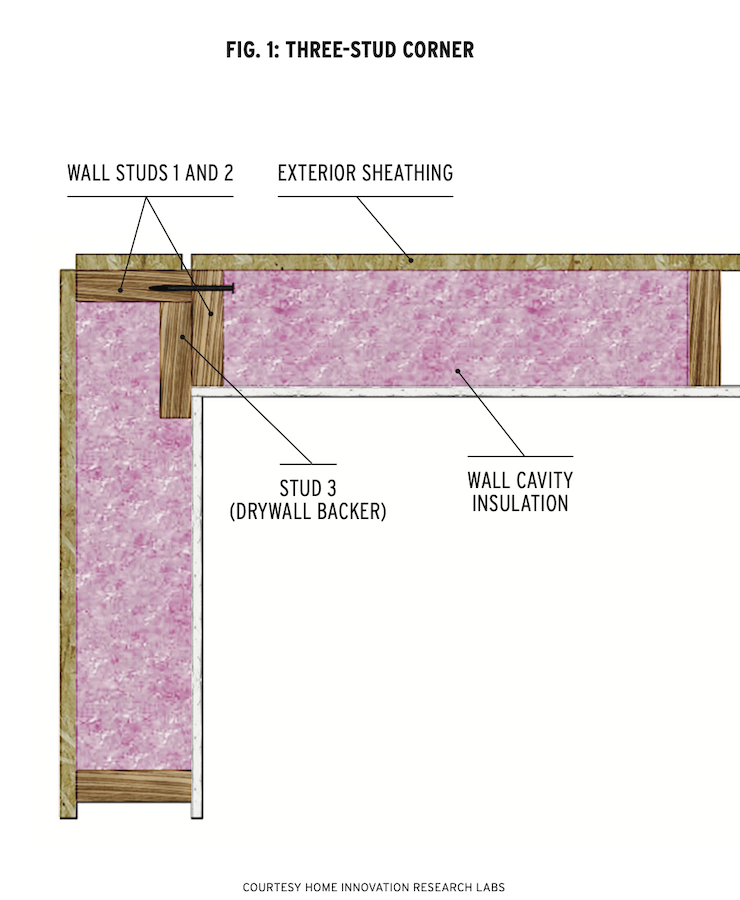
Partition Tees: Two Options That Make It Easier to Install Insulation
These also create large, wasteful voids in the thermal boundary. Rather than framing a conventional partition tee, a ladder-style tee (Fig. 2A) allows you to install insulation behind the partition. Just be sure to install the blocking on edge.
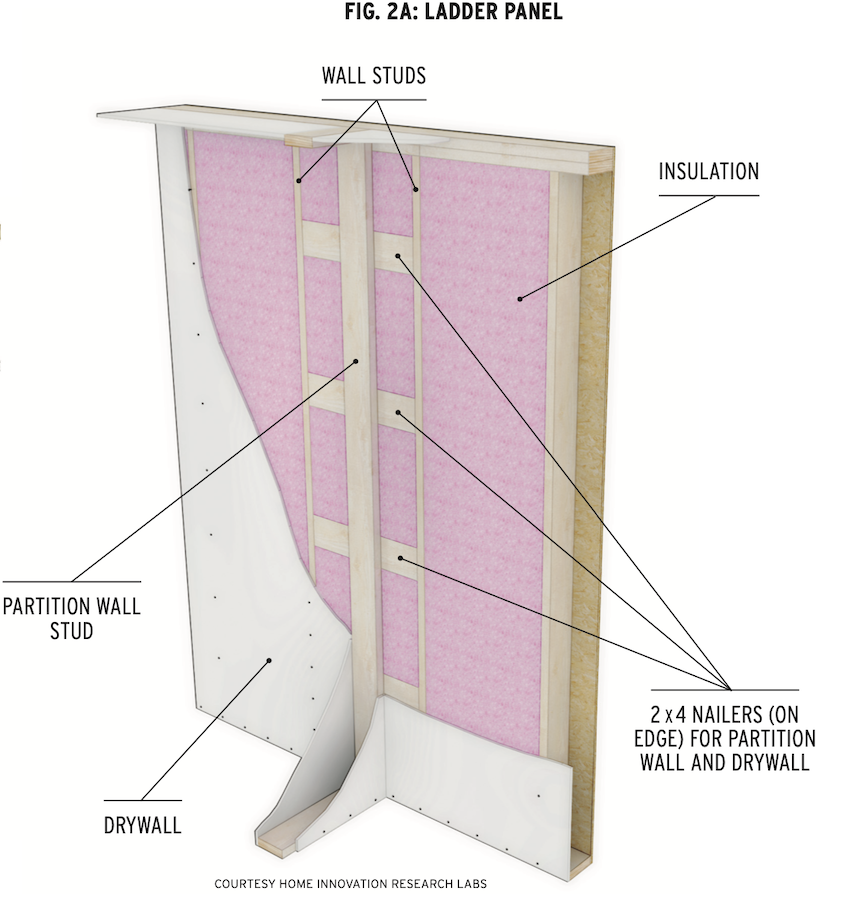
Another method uses a 2x6 behind a 2x4 partition-wall end stud to provide nailing support for the drywall, but is still open to allow insulation to be installed through the partition (Fig. 2B).
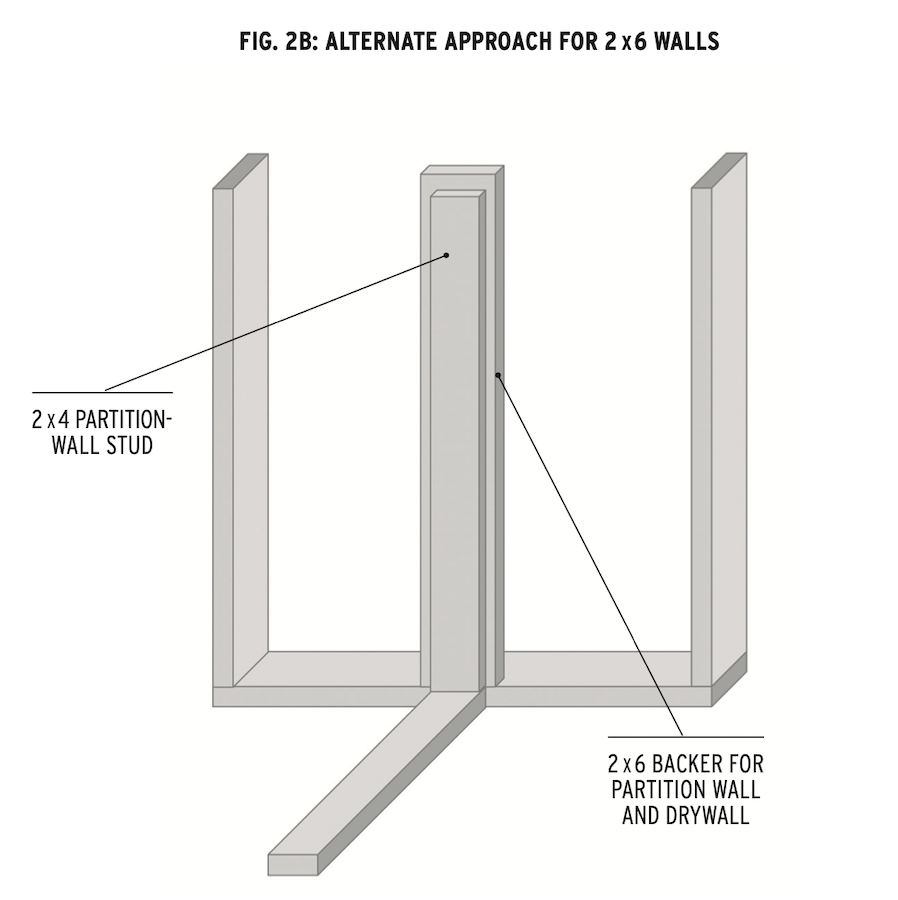
Window and Door Openings: Reduced Header Sizes, Better Insulation
These framed components are often built with much more framing lumber than is structurally required, causing significantly more thermal loss. Specifically, headers are often over-engineered and leave no room for insulation. When I started framing homes (many years ago), we simply used double 2x12 headers over nearly every opening. But many openings require just half that amount of structural support, and headers over openings located directly below a gable end truss are practically unnecessary because there is virtually no load on the wall.
OVE reduces the amount of framing in a wall as much as possible, and in turn increases the amount of wall-cavity insulation
Ask your structural engineer to reduce header sizes to what is required and no more. Headers under gable-end trusses can often be reduced to a pair of 2x4s.
There are also several ways to insulate headers. Instead of a double layer of 2-by material for a 2x4 wall, replace the spacers with ½-inch EPS (expanded polystyrene) or XPS (extruded polystyrene) foam panels (Fig. 3). On 2x6 walls, the headers can be pushed to the exterior of the wall, leaving a 2 ½-inch void to be filled with insulation or foam board.
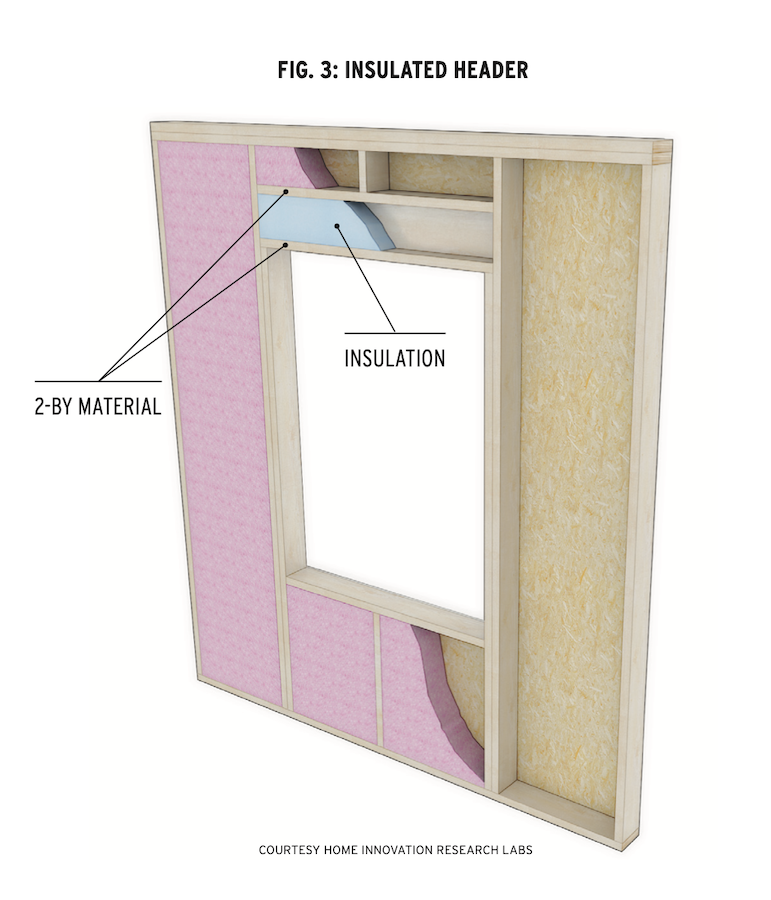
With these basic OVE techniques, you’ll improve thermal performance, lower your lumber costs, and be confident that homeowners will experience better indoor comfort and overall satisfaction.
Graham Davis drives quality and performance in home building as a building performance specialist on the PERFORM Builder Solutions team at IBACOS.
Advertisement
Related Stories
Quality Matters
5 Ways to Silence Squeaky Floors
Take these tips to heart to deliver quiet floors and satisfied homeowners
Quality Matters
Tips for Placing HVAC Ducts in Conditioned Space
See how putting HVAC ducts inside conditioned space in a home benefits both the builder and the homeowner
Construction
Ladder Safety Tips for Every Jobsite
Like any construction tool, proper and safe ladder and pump jack use requires dedicated training and constant respect


